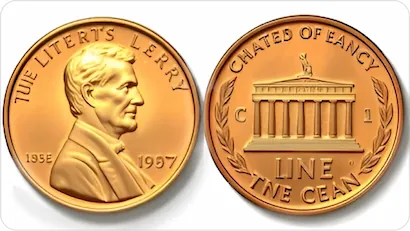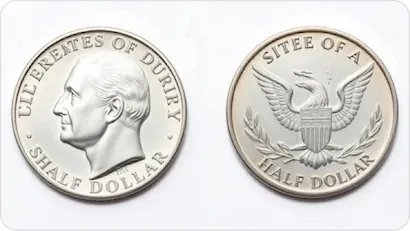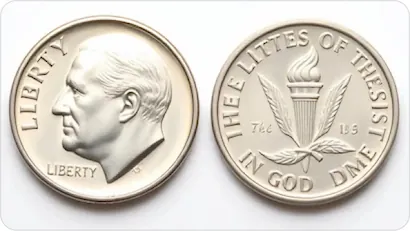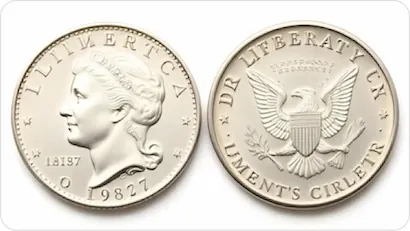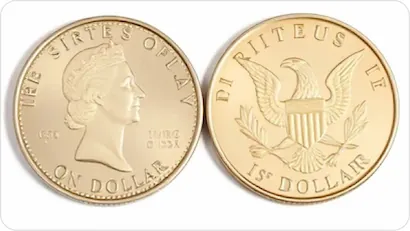Base Nickels - A Guide to Grading System
Coin grading is indeed a vital component of numismatics that may turn a simple nickel into a valuable representative of any collection alike. Sometimes, the only thing that distinguishes ordinary, not-worthy coins from those possessing potential lies in the grade, i.e., a reliable indicator of the quality and condition.
Yet, there are so many types and numismatic opportunities presented via nickels, that grading them might seem overwhelming at first. Anyway, coin evaluation is straightforward and easy, and here is why.
An Overview of Nickels and Their Types
Since their debut in 1866, nickels could never be neglected as a fundamental part of American coinage. These five-cent coins, which have a rich history of more than 150 years, changed their designs and compositions, yet the essence speaks about their place in a consistent way. What about their versions and conditions found common for each group?
| Image | Coin Type | Mintage Years | Distinct Feature | Common Grades |
|---|---|---|---|---|
| Shield Nickels | 1866-1883 | The shield emblem on the obverse | Good (G-4) to Very Good (VG-8) | |
| Liberty Head Nickels | 1883-1913 | The enormous Roman numeral "V" on the reverse | Good (G-4) to Fine (F-12) | |
| Buffalo Nickels | 1913-1938 | A Native American on the obverse and a buffalo on the reverse | Fine (F-12) to Very Fine (VF-20) | |
| Jefferson Nickels | 1938-present | A profile of Founding Father Thomas Jefferson | Extremely Fine (EF-40) or higher |
Major Grade Levels: Coin Characteristics
When nickels are graded, their condition is evaluated following specific standards and rules. Here are the main grade levels along with instances that apply to all major nickel types.
Poor (P-1):
Most details are unrecognizable due to heavy wear. As an illustration, the buffalo on Buffalo Nickels, the "V" on Liberty Nickels, and the shield on Shield Nickels may all seem like vague outlines.
Good (G-4):
Major details are weak but distinct. E.g., the contour of the shield is evident for Shield nickels; there is a faint "V" on Liberty nickels; buffalo nickel grading might prove that the Native American's profile is visible on the coin, even though the date is worn smooth.
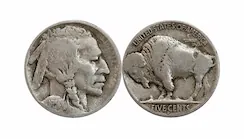
Very Good (VG-8):
The coin has noticeable wear all over, though there is more detail visible. Grading shield nickels usually highlights that certain lines inside the shield may be visible. Parts of Liberty's hair and crown will be visible on Liberty Nickels, etc.
Fine (F-12):
Moderate wear with distinct and noticeable core design components. Shield Nickels, for instance, will have more distinct shield elements. Liberty nickel grading will definitely refer to noticeable hair curls, or grading Jefferson nickels can reveal the silhouette of Monticello without severe alterations.
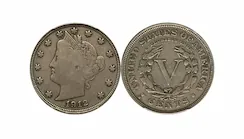
Very Fine (VF-20):
Nearly all design elements are still evident; light to moderate wear. In this case. Liberty Nickels have more pronounced wreath ornamentation and hairlines. When grading Buffalo nickels, one can notice that the Native American's face is to be prominently featured.
Extremely Fine (EF-40):
Sharp detailing and minimal wear limited to the highest spots. While grading Liberty nickels, it can be inferred that these coins are to neatly incorporate hair and wreath elements. The buffalo nickel grading scale, on its part, can demonstrate an undamaged tail and horns.
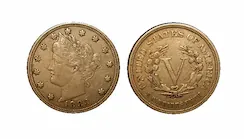
About Uncirculated (AU-50):
Some luster is still there; only the highest points show minor signs of tarnish. For instance, the Shield nickels may have a small amount of flattening on the crest. Liberty Native American and buffalo details shall be fully detailed on Buffalo Nickels, with elevated parts slightly smoothed out.
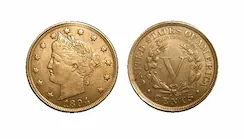
Mint State (MS-60 to MS-70):
No wear indicators (which depends on the grade, though). MS-70 is seen as exceptionally detailed coins with immaculate surfaces that are uncommon for early nickels.
Tips for Self-Grading Nickels
Get acquainted with the Sheldon Scale so that you can comprehend the grading standards on the spot.
Pay attention to the design's high points since they exhibit the first wear.
For an accurate assessment, use a loupe or magnifying glass and make sure there is enough light to do so.
Recognize the difference between circulation wear and minting defects such as die cracks or weak strikes.
Examine your coin in comparison to grading manuals or images of expertly graded specimens.
To gain competence and expertise, begin with grading common nickels, not the rare ones.
Use our Coin ID Scanner app for quick and reliable nickel evaluations for free.
By the Way… Coin Grading by US Coin Type
Delve into your collection and let each grade reveal the true value within.
